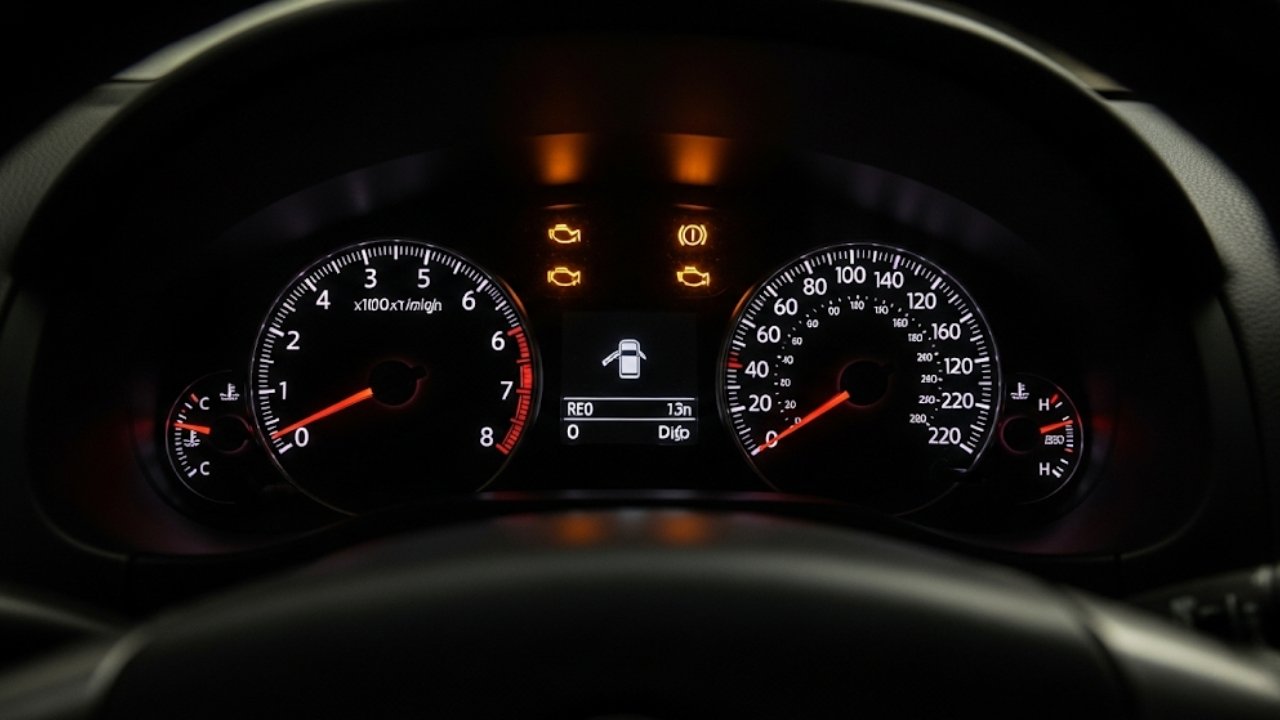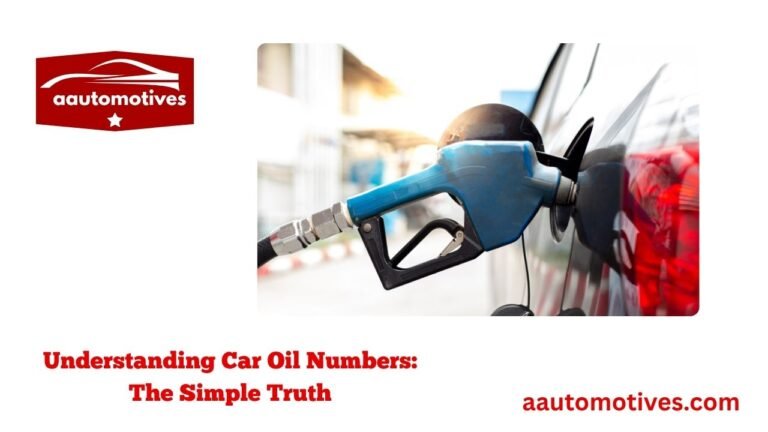Why Is My Car’s Oil Light On?

Ever had your dashboard light up like a Christmas tree? One tiny red oil can symbol blinking at you like a warning flare—yep, that’s your car begging for help. That little light isn’t just decoration. It’s trying to warn you of something serious—low oil pressure in car.
Let me tell you, the first time it happened to me, I was cruising down a dusty village road in the middle of summer. Windows down, engine humming, music on… then ping! The oil light came on. My stomach dropped. I had no idea what it meant. Turns out, ignoring it could have cost me a whole engine.
In this article, we’re going to break it all down in simple, human terms. We’ll explore what low oil pressure really means, why it happens, how it feels, and most importantly—how to fix it before your engine says its last goodbye.
What Is Low Oil Pressure in Car?

Oil pressure is the force that pushes oil through the engine. If that pressure drops too low, the oil can’t reach all the parts it needs to lubricate. Friction increases. Parts wear down. The engine overheats. Boom—major damage.
Here’s what low oil pressure in a car really means:
The oil isn’t circulating well.
Critical parts aren’t getting lubrication.
The engine could seize if ignored.
This isn’t just a warning—it’s a red alert.
Common Symptoms of Low Oil Pressure
When your car’s oil pressure drops, it won’t always shout—but it does whisper. And sometimes it screams. You’ve got to learn to listen.
Here are the most common signs:
Oil pressure warning light (that annoying red can icon)
Burning oil smell
Unusual engine noise – like ticking, knocking, or grinding
️ Overheating engine
Loss of power or engine stalling
Imagine your engine crying out with every tick and knock—like a marathon runner running out of breath. That’s low oil pressure telling you, “Hey, I’m not okay!”
Why Does Low Oil Pressure in Car Happen?
Just like a cold or fever, low oil pressure has multiple causes. Some are easy fixes, others might break the bank. But knowing them helps you act before it’s too late.
Let’s break it down:
| Cause | Description |
|---|---|
| Low oil level | Not enough oil in the engine. Check the dipstick. |
| Dirty or old oil | Sludge blocks flow, causing a pressure drop. |
| Faulty oil pump | The heart of the system. If it fails, oil doesn’t circulate. |
| Clogged oil filter | Oil can’t get through, reducing pressure. |
| Worn engine bearings | Creates more clearance, reducing resistance and pressure. |
| Wrong oil viscosity | Too thick or too thin, and it won’t flow as needed. |
Let’s relate it to real life—ever tried to drink a milkshake through a coffee straw? That’s what your engine feels like with dirty oil or a clogged filter. It can’t breathe. It can’t move. It’s gasping.
Can I Keep Driving with Low Oil Pressure?
I’ll be honest—driving with low oil pressure in car is like running with a sprained ankle. You might make it a few blocks. But you’re doing serious damage with every step.
Here’s why you should stop driving immediately if that oil light comes on:
Your engine could seize up completely.
You risk permanent internal damage.
Repairs could cost thousands of dollars.
It’s not worth the risk.
Bullet-point summary:
Never ignore the oil pressure warning light.
Stop driving immediately if pressure drops.
Check oil level and top up if low.
Get professional help to diagnose the issue fast.
How to Check for Low Oil Pressure in Car
You don’t need to be a mechanic to check oil pressure. A little DIY spirit and a few minutes can go a long way.
Here’s a quick step-by-step guide:
Turn off the engine and wait for it to cool.
Pop the hood and locate the oil dipstick (usually yellow).
Pull it out, wipe it clean, reinsert fully, then pull out again.
Check the oil level. It should be between the “min” and “max” marks.
If it’s low, top it up with the correct type of oil.
If the oil is dark, gritty, or smells burnt—you’ve got problems. It might not be just about quantity. It could be quality or even flow issues.
Pro tip: If the dipstick shows normal oil levels but the pressure light stays on, it’s likely a mechanical issue like a bad oil pump or pressure sensor.
How Oil Viscosity Affects Oil Pressure
Here’s something most drivers overlook—oil viscosity. It’s basically how thick or thin your engine oil is. But get this wrong, and you can kiss that oil pressure goodbye.
Imagine trying to pour honey through a funnel. Now imagine pouring water. That’s viscosity in action.
If the oil is:
Too thick (high viscosity): It moves slowly, especially in cold weather. Pressure might spike, then drop.
Too thin (low viscosity): It slips through too fast, not building enough pressure to lubricate.
Always use the manufacturer-recommended oil for your vehicle. It’s in your owner’s manual—or you can check the oil cap.
The Role of Oil Pumps in Maintaining Pressure
The oil pump is the unsung hero of your engine. It quietly circulates oil with just the right force. But when it starts to fail, all chaos breaks loose.
Here’s what a failing oil pump causes:
Drastically low oil pressure
Loud ticking noises from the engine
Pressure light that comes on, especially at idle
Engine performance drops
If your pump is gone, you can’t fake it. Replacing it is expensive—but cheaper than a new engine. Trust me, I’ve been there. I once delayed a pump replacement, and the engine died on the highway. Lesson learned.
Diagnosing Low Oil Pressure in Car: What Mechanics Check
When you take your car to a mechanic for low oil pressure, they don’t just guess—they investigate. Diagnosing it is like solving a crime scene. They follow the clues, run tests, and dig deep under the hood.
Here’s what they typically check:
✅ Oil level and condition
✅ Oil filter and pressure relief valve
✅ Oil pressure sensor (it might be faulty)
✅ Mechanical oil pressure gauge to get real-time readings
✅ Oil pump health and flow rate
✅ Engine bearing wear (usually with a tear-down)
Sometimes, it’s as simple as a $10 sensor replacement. Other times, it’s a $2,000+ oil pump and labor cost. But without checking, you’ll never know. Don’t be afraid to ask your mechanic for actual pressure readings in PSI.
Quick table for reference:
| Oil Pressure Readings | What It Means |
|---|---|
| 10 PSI at idle (warm engine) | Minimum acceptable, but not great |
| 30-40 PSI at cruising speed | Normal operating pressure |
| Below 10 PSI while driving | Danger zone – stop the engine |
Can a Faulty Oil Pressure Sensor Cause Panic?
Oh yes, and it happens more than you think. This tiny sensor sends a signal to your dashboard. But when it malfunctions, it might show low oil pressure in car even when everything’s fine.
Here’s how to spot a bad sensor:
The oil light flickers randomly
No strange noises or performance drops
Oil level and color are perfect
No overheating or smoke
If your gut says, “This doesn’t make sense,” trust it. A $20 sensor replacement can save you from stress and misdiagnosis.
Pro tip: If your car is newer, a code reader (OBD-II scanner) can help check for sensor faults quickly.
Long-Term Consequences of Ignoring Low Oil Pressure
Let me paint a picture.
You ignore the oil light. You keep driving. The engine starts knocking. It overheats. Then one day, while you’re picking up your kid from school or heading to the market—silence. The engine dies. Completely.
Here’s what you could face:
⚠️ Engine seizure (metal parts weld together from heat)
⚠️ Crankshaft and camshaft wear
⚠️ Permanent bearing damage
⚠️ Total engine replacement
I once saw a guy tow his car to the shop, crying. His low oil pressure warning came on for days, but he kept pushing it. In the end, the repair bill was more than the car’s worth. Don’t let that be you.
How to Prevent Low Oil Pressure in Car
Prevention is cheaper than repair—always. Think of it as brushing your teeth instead of paying for a root canal.
Here’s how to prevent low oil pressure like a pro:
️ Change oil regularly – Follow the service schedule (usually every 5,000–7,000 miles)
Use the right oil – Stick to manufacturer specs
Replace oil filters during every oil change
Avoid cheap engine oil – Poor quality = poor pressure
Have your mechanic check the oil pump during major services
Inspect oil levels monthly – Make it a habit!
Also, drive gently when your engine is cold. That’s when oil is thickest and pressure issues are most likely.
Story Time: The Day My Car Taught Me a Lesson
Let me share a quick story. A few years back, I was heading to a family wedding. All dressed up, on the highway, feeling fly. Suddenly, the oil pressure light came on. I ignored it. “I’ll make it,” I told myself.
Ten minutes later, the car started knocking. My heart sank. I pulled over, popped the hood—and the oil dipstick was dry. Not a drop.
Luckily, a roadside shop had the right oil. I topped it up, crossed my fingers, and restarted the engine. It lived. But that close call taught me to always listen to my car’s warnings.
Now, I check my oil religiously—once a month, like brushing teeth.
FAQs About Low Oil Pressure in Car
1. How do I know if my car has low oil pressure?
Look for signs like the oil light on the dash, engine noise, or performance loss. A pressure gauge or OBD-II scanner can confirm it.
2. Can I fix low oil pressure myself?
Yes—if it’s just low oil or a dirty filter. But if it’s a failing oil pump or internal engine wear, you’ll need a mechanic.
3. How much does it cost to fix low oil pressure?
It varies widely. A sensor replacement might cost $50. An oil pump replacement could run $500–$1,500. If the engine is damaged, it could be $3,000+.
4. Is synthetic oil better for oil pressure?
Yes, in many cases. Synthetic oil flows better in extreme temperatures and resists breakdown, helping maintain consistent pressure.
5. Why does my oil light flicker at idle only?
That’s a classic sign of worn bearings or a weak oil pump. Pressure often drops at low RPMs. Have it checked soon.
6. What happens if oil pressure drops while driving?
Pull over safely, shut the engine off, and check your oil level. Driving further can cause catastrophic engine failure.
7. Can weather affect oil pressure?
Absolutely. Cold weather can make oil thicker, raising pressure. Hot weather or a hot engine can thin oil and reduce pressure.
8. Is it safe to drive a short distance with low oil pressure?
Not recommended. Even short drives can cause long-term damage. Tow it or fix it on the spot.
Wrap-Up: Don’t Let Low Oil Pressure in Car Catch You Off Guard
Your car isn’t just a machine—it’s a part of your daily life. It deserves love, care, and attention. When it shows signs like low oil pressure, it’s not being dramatic—it’s begging for help.
Just like you’d rush to a doctor if your chest felt tight, don’t hesitate when your engine oil light blinks. Whether it’s low oil, a bad sensor, or something deeper, take action fast.
Final checklist:
✅ Monitor oil levels monthly
✅ Use the right oil and change it on schedule
✅ Replace filters regularly
✅ Never ignore warning lights
✅ Listen to your engine—it tells stories
With just a little attention, you can keep your car healthy, smooth, and ready for every adventure. Let the engine purr—not cry.






